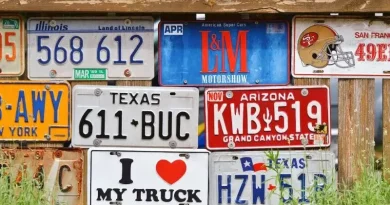How To Save On Your Car Repairs At Home?
Last updated on July 19th, 2024 at 03:21 am
If you’re like most people, the idea of taking your car to the garage and trusting the technicians there to get it done right and on time fills you with an air of dread, leading you to shell out more money than necessary in order to avoid the hassle. But this doesn’t have to be the case! By taking on some of the simple tasks involved in auto care yourself, you’ll not only save yourself time and money—you’ll also learn how your car works so that you can take better care of it in the future!
Which Tool Makes Your Daily Vehicle Maintenance Easier?
The CGSULIT SC880 Full System Automotive Diagnostic Scanner is one of a kind. It comes with all software and hardware needed for diagnostics in vehicles, such as Ford, GM, Chrysler, Toyota, Nissan, Lexus, and so on. As well it could reset maintenance lights error codes for 80+ car makes from worldwide like BMW, Mercedes-Benz, Volkswagen, Hyundai and more. Easily diagnose plenty of car models all systems with one device without the hassle of replacing many complex tools.
What is CGSULIT SC880 Automotive Diagnostic Scanner?
The SC880 is the newest model from CGSULIT, which allows you to do diagnostics on all electronic systems of 98% worldwide made vehicles. It performs 25+ most frequently used hot functions:
- Oil Light Reset
- ABS Bleeding
- EPB Service
- SAS Calibration
- Airbag Reset(SRS System)
- TPMS Service
- DPF regeneration(Diesel Particulate Filter System regeneration)
- BRT(Battery Replacement)
- Transmission Adaption
- TPS/TBA(Throttle)
- PFP(Prime Fuel Pump)
- Injector Coding
- Gear Learning
- CVT(Continuous Variable Transmission) Learn
- EVAP(Evaporative Emission Control System) Test
- More…
Ideal car diagnostic tool SC880 for automobile repair shops, self-owned garages, or by individuals who want to work in their own vehicles.
SC880 features an easy-to-use interface that allows you to easily perform functions like reading error codes (both generic and manufacturer-specific), erasing error codes, identifying vehicle information automatically, recording, playbacking and printing datas, calculating mileage, resetting the warning lights. Package comes with an obd2 cable so you can implement an obd interface plug and play.
Why Do You Need CGSULIT SC880 Automotive Diagnostic Scanner?
Finding a malfunction light on the dashboard is never good, it could be a small fix with a loose part or a major repair with a broken part. A CGSULIT SC880 universal diagnostic scanner makes repair easier because it will tell you what’s wrong with your car within minutes. You can save a ton of cost with the SC880 to assist with simpler maintenance items such as oil and brake fluid changes, or you can diagnose vehicle issues before taking it to a repair shop so you won’t be fooled by a mechanic.
Also Check: Top 10 Most Comfortable Luxury SUVs For Long Distance Driving
It goes without saying that a multifunctional and cost-effective OBD2 scanner will save car owners a lot of money and time. Whether it’s from vehicle diagnostics, problem prevention, or to avoid dishonest mechanics, this SC880 Automotive Diagnostic scanner is an excellent investment whether you’re a seasoned mechanic or a novice car owner.
Here are some things you’ll want to keep an eye on so that your car stays in tip-top shape.
Checking Oil Levels
Checking your car’s oil level is an important way of monitoring your car’s health. Every time you change your oil, make a habit of checking your vehicle’s oil level. Keep a ruler in your glove compartment and mark where it reads on every fill-up. Over time, you will begin to notice trends in when and by how much oil needs to be added.
Checking Tire Tread Section
Check your tires’ tread section. The minimum amount of tread that you should have on your tires is 1/32 (0.8 millimeters). If it’s less than 1/16 (1.6 millimeters), you need new tires, even if they look otherwise OK. Tires with less than 1/32 inch of tread can be dangerous and are illegal in some states. They also use more fuel and wear out faster. If you don’t know how to check your tire tread or if you’re not sure whether they need replacing, take them to a tire store for an inspection or ask someone at a gas station who works there.
Check Automatic Transmission Fluid Level
Automatic transmission fluid lubricates and cools your transmission. A low transmission fluid level can reduce your engine’s lifespan, cause shivering, rough shifting and even damage your car’s electrical systems. When you need a full flush, it pays to call in an expert. Most service centers offer regular maintenance programs that cover everything from tire rotations and brake checks to alignments, fluid flushes, and oil changes for a single flat fee.
Battery Life and Performance
Check your battery life and performance. Your fuel economy can change from year-to-year and even month to month depending on how you drive and weather conditions, but it’s important to make sure your battery is performing properly. If not, your vehicle’s performance could suffer as well as its efficiency. If you notice any of these signs in your vehicle’s behavior, a quick trip to a mechanic may be needed.
You might also like: Top 10 Best Performance Cars Under $20k
Clean the Exhaust System and Muffler
Exhaust fumes contain carbon monoxide (CO), an odorless and colorless gas that can build up in the car and be lethal. The best way to get rid of exhaust fumes is by cleaning the system from top to bottom. Depending on your vehicle, you may need a mechanic or car specialist for help. Every time you take your car into a mechanic shop, they’ll check the muffler and possibly replace it if necessary.
Cooling System Inspection
Most of your car’s vital components need regular, ongoing maintenance. Inspection of these parts doesn’t take much time or money and can help ensure that your car lasts as long as possible. One part that requires routine inspection is your car’s cooling system.
Wiper Blade Replacement
Wiper blades are one of those maintenance items that we tend to put off because they’re not exactly exciting. The good news is that wiper blade replacement doesn’t take long, and with a few simple steps, you can have a brand new pair on your vehicle in no time. Here’s what you need to know.
When to do small car maintenance?
For most vehicles, regular maintenance begins at 5,000 miles and continues from there every 5,000-10,000 miles.
Give your car a full clean, inside and out
If you’re not using your car on a regular basis, give it a full clean and oil change at least once a month. This will ensure that any wear and tear is minimal, and protect your car from corrosion. If you use your car every day, make it a weekly routine to do a full detail; doing so means that small problems don’t turn into bigger ones.
Check all fluid levels
Fluid levels are key to keeping your car performing at its best. The fluid that needs checking most regularly is your engine oil, which should be changed every 3,000 miles or so.
Tyre pressure and tread depth
You’re most likely familiar with your tyre pressure, as you should check it at least once a month. But did you know that checking tyre tread depth is important too? This ensures that your tires are wearing evenly and safely. If they aren’t properly maintained, it could lead to increased fuel costs and safety concerns on your journey.
Also Check: Top 10 Best Luxury Sedans With High Ground Clearance
Test your car’s battery
If your car’s battery is a little older, your battery may not be strong enough to start it up. That’s why car batteries need regular testing and replacement—once a year is recommended. If you’ve noticed your car starting more slowly or requiring jump-starts more often, it might be time for a new battery. Luckily, replacing a car battery doesn’t require any technical knowledge—all you need are two simple tools: jumper cables and a new battery.
Check your dashboard for any red or yellow warning lights
Many dashboard lights indicate that your vehicle’s service is due for a tune-up. Once you know what each light means, it’s easy to make sure your car is in good shape! Don’t let these warning lights go ignored for too long—or you could be putting yourself and others at risk. Make it a habit to look over your dash every time you get in or out of your car, and once a month, check that all warning lights have cleared up.
Test your brakes
Your brakes should be tested at least twice a month. Always check your owner’s manual for specific instructions, but in general, here are two methods you can use: The first is to pull up next to a curb or other solid object and press down on your brake pedal. If your car creeps forward instead of halting when you apply pressure, there could be an issue with your braking system.
When to do major car maintenance?
For most vehicles, major maintenance begins at 12000 miles and continues from there every 12000-24000 miles.
Replace the timing belt or balancer
The timing belt or balancer, which synchronizes the opening and closing of the valves in the engine with the spinning of the crankshaft, must be checked regularly. One surefire way to know if it needs replacing is to actually replace it early and save yourself from needing a more expensive repair later on. According to most experts, timing belt replacement should occur every 60,000 miles. However, many car owners choose to replace their timing belts at 30,000-mile intervals. This can help you avoid an even more costly engine overhaul down the road—not to mention give you peace of mind that your car’s running smoothly!
Change the water pump
The water pump is responsible for sending coolant around your engine. The coolant keeps it from overheating, so if you’re not changing your car’s coolant regularly or you see signs that it needs a change, it could be an indicator that there’s something wrong with your water pump. To replace a bad water pump in your car yourself, get a replacement from Autozone and follow along with YouTube video tutorials on how to do so. Make sure you have proper safety equipment like gloves and eye protection before starting any job though!
Check the suspension and revamp if necessary
Most cars come with a recommended oil change schedule, but there’s no rule that says you have to follow it. You can change your oil every 3000 miles, or every 10,000 miles—it’s up to you. The key is consistency: If you want your car to last longer, keep up with oil changes and pay attention to other regular maintenance like tire rotations and scheduled checks by a mechanic.
Replace all the hose pipes
Your car’s air filter is an important part of the engine, preventing particulates and other junk from getting sucked in. As a result, changing the air filter regularly is one of the simplest car maintenance tasks that you can do, at least if you have basic mechanical knowledge.
Monitor the clutch plate status
Cars, trucks, vans and other vehicles use a clutch plate, which is found inside the transmission. If you experience clunky shifting or the transmission doesn’t seem to engage at all, a problem with the clutch plate could be the culprit. The good news is that most clutch plates are fairly simple devices. You can actually monitor their status yourself by checking for metal ridges along the back surface of the plate. These ridges should be equal in height across all three facets of each plate; if they’re not uniform and any one section is significantly lower than its neighboring areas, you’ll likely need replacement plates.
Replace engine mounts if necessary
If you’ve ever felt your car shaking when you accelerate, it may be time for engine mounts replacement. Engine mounts help keep your engine in place, so if they’re damaged or deteriorated—or even just worn down from age—they can cause your engine to rock up and down, resulting in shaking during acceleration. If you feel any such shaking, take your vehicle to a mechanic immediately; engine mounts are easy and cheap to replace if they’re within their useful lifespan!




